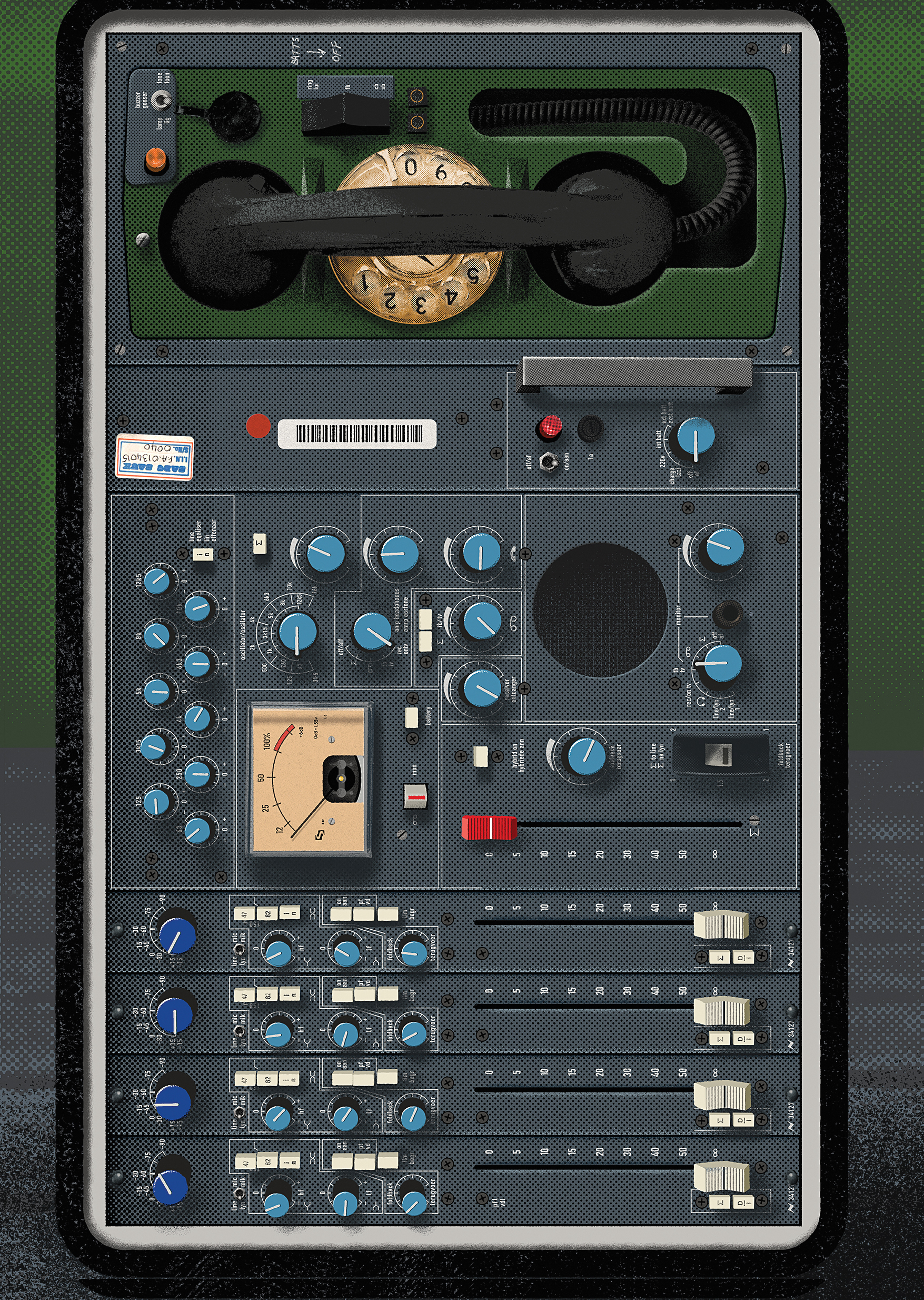Here's another new plug-in that comes included with McDSP's APB ("analog processing box") units (APB-8, APB-16 [Tape Op #134]). In case you don't know what APB processors are, they're 8 and 16-channel outboard units that connect to a computer and allow plug-in control of real analog circuits. TAPE APB utilizes this system and a "four stage analog process" to give us analog emulation of the sound of tape, with a number of ways to tailor the sound as needed.
The TAPE APB plug-in always opens as a stereo unit, but if applied to a mono track, it only uses one channel of the APB's hardware audio resources. The two sides can run independently or linked, and can process as stereo pair (S/P) or mid/side (M/S). A switch for GP9 or 456 selects (Ampex/Quantegy-only) tape type, while another switch toggles between 80s and 70s head types – analog tape decks kept getting better over the decades, with lower noise floor and better fidelity. Knobs for In (input), Comp (compression), and Out (output) should be obvious. The other knobs reflect changes that happen as tape speeds increase: Rolloff (speed goes up, low end levels drop) and Bump (a low end head bump that moves to higher frequencies at higher tape speeds). The GUI's VU meters are well articulated, and can show gain reduction or I/O levels.
I was starting a mix on a project that had very brittle electric guitar and bass tones. Applying TAPE APB to these tracks, running through a number of presets, and tweaking a bit helped me land on a setting that took away some of the harshness and made the guitars sound much more appealing. With bass guitar, clicking on 70s Head and finding a sweet spot for the Bump frequency filled in the lows in a useful way, much like the BOB APB plug-in I reviewed recently [Tape Op #160]. When I dropped TAPE APB on a vocal track and pushed the compression, it reacted quite overtly and really changed the feel of the track. Dialing it back sounded natural while adding some of that compressed tape quality. There's that weird, sucking compression artifact one gets when hitting tape way too hard, and when set too forcefully, it almost sounded like that – something I've never heard any other tape emulators do so far.
For me, real tape recordings get that unique transient reduction (especially on drums), and TAPE APB did this in a very similar way. Slapping it across a drum bus allowed me to get more of a "hitting tape and console mix" sound quite quickly. My usual in the box mix bus includes a Baxandall-style EQ set very lightly with a fast/clean limiter set to only remove a few peaks occasionally. I swapped these plug-ins out with TAPE APB instead, tweaked a few settings, and by running it in a fairly timid way was able to get a similar sound to my mix bus that also added a little something more, just like tape does.
Having entered the recording world when there were only analog tape decks to record on, I did keep expecting a tape speed switch, but the Rolloff and Bump knobs obviously handle that with wider parameters than an actual deck. I was happy not to experience any hiss, wow and flutter, tape shed, or dropouts. I also appreciated that there wasn't a plethora of controls, and that real analog processing with TAPE APB adds the aspects of tape that I enjoyed in the first place.




_disp_horizontal_bw.jpg)